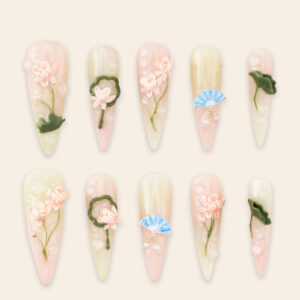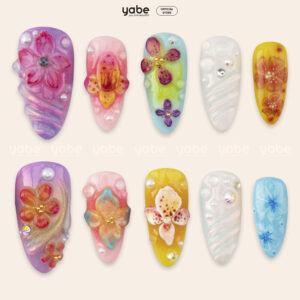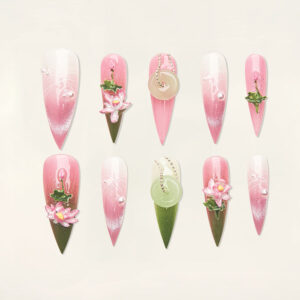Nail Dust Danger Explained: Hidden Health Risks & What You Can Do to Stay Safe
Nail dust is a byproduct of filing, shaping, and buffing artificial or natural nails. This seemingly harmless powder contains:
- Acrylic or gel residue
- Natural keratin from nails
- Plastic particles from nail tips
- Glitter, pigments, and adhesives
Because it’s extremely fine and light, it easily becomes airborne, making it easy to inhale or land on the skin and eyes.

Why Nail Dust Is Dangerous
Unlike normal household dust, nail dust danger lies in its ultra-fine particles, often under 10 microns in diameter. This allows them to:
- Enter deep into the lungs
- Stick to nasal passages
- Remain suspended in the air for long periods
Understanding the nail dust danger is essential for maintaining your health.
Worse, nail products often contain methacrylates, formaldehyde, and silica—all of which can trigger allergic reactions or serious health issues upon repeated exposure.
Health Risks of Nail Dust Exposure
Respiratory Problems
Breathing in dust filled with chemicals and fine particles can lead to:
- Asthma attacks
- Sinus inflammation
- Dry coughing and wheezing

Skin Irritation
Nail dust can settle on your arms, hands, and neck, causing:
- Rashes
- Itching
- Dry, flaky skin
Eye Discomfort
Particles floating in the air can easily get into your eyes, especially during high-speed filing. Symptoms include:
- Redness
- Itching
- Watery eyes
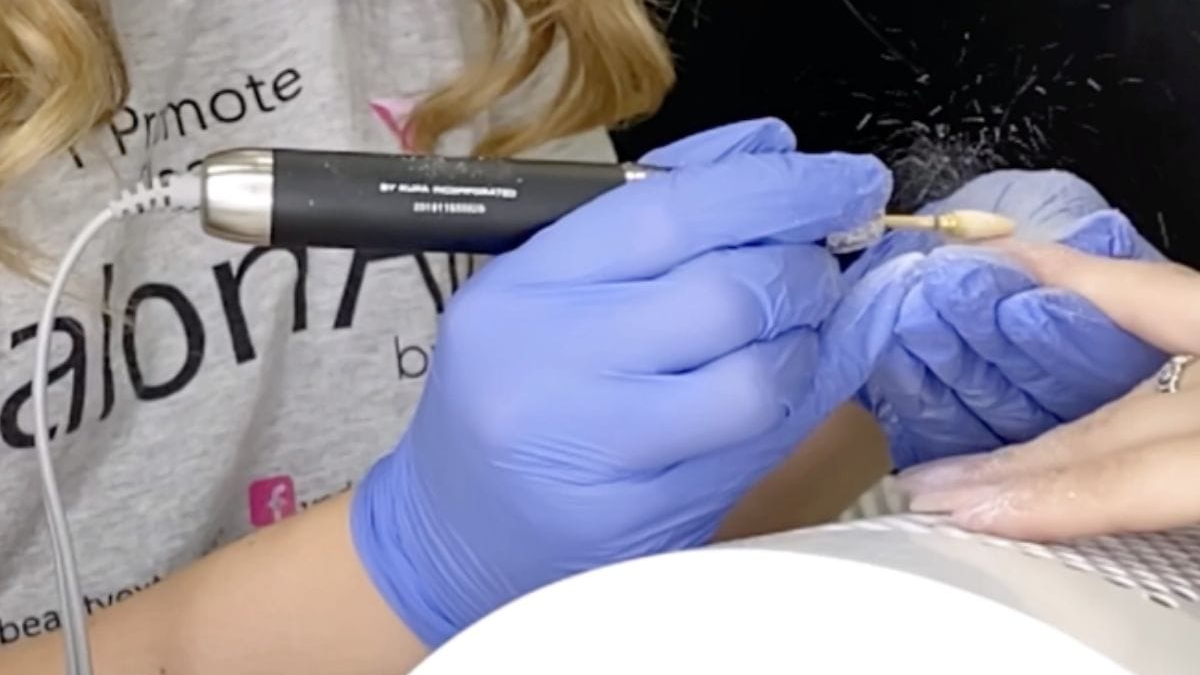
Long-Term Effects of Nail Dust Inhalation
Repeated exposure without proper protection can cause chronic conditions, including:
- Chronic bronchitis
- Lung scarring
- Persistent allergic reactions
Studies show that nail technicians have a higher incidence of occupational asthma, often linked to poor dust control in salons.
Risk Groups: Who’s Most Vulnerable?
Nail Technicians
They are on the front lines, exposed every day for long hours. Without protective gear, their risk multiplies.
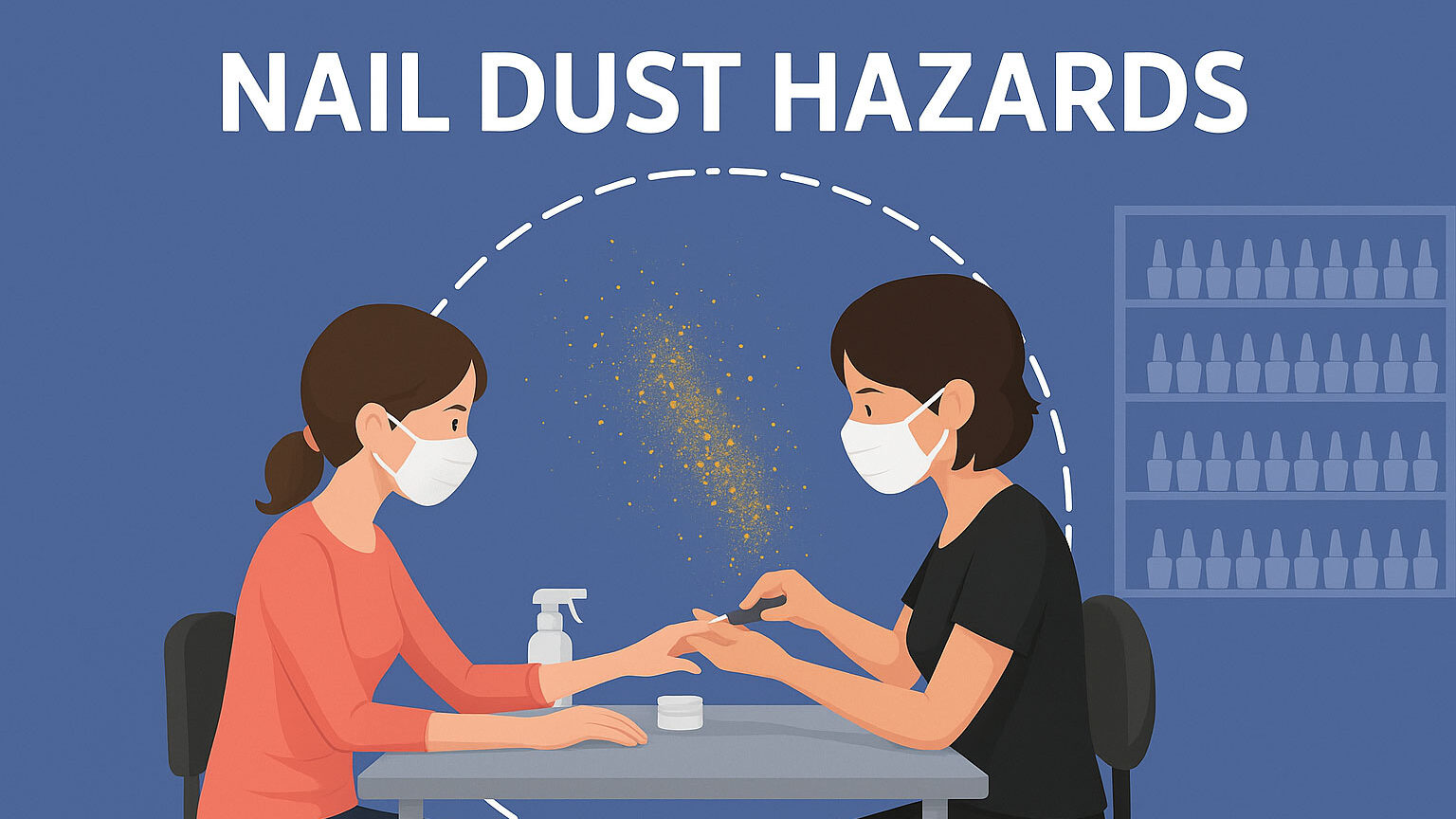
Frequent Clients
Regular visitors to salons may inhale significant amounts of dust, especially in poorly ventilated spaces.
Individuals with Pre-existing Conditions
Anyone with asthma, COPD, or allergies is more susceptible to complications from nail dust.
What Makes Nail Dust More Harmful Over Time
- Poor ventilation allows dust to accumulate
- Daily exposure builds up in the lungs and airways
- Lack of protective gear like masks or dust collectors increases vulnerability
Each exposure may seem small, but over time the impact can be severe and irreversible.
Common Symptoms of Overexposure
Recognizing early symptoms can help you act before it becomes chronic. Look for:
- Frequent sneezing and coughing
- Difficulty breathing during or after nail sessions
- Persistent headaches
- Irritated, red, or watery eyes
OSHA and Health Regulations on Nail Dust
The Occupational Safety and Health Administration (OSHA) recommends:
- Local exhaust ventilation systems
- N95 masks or respirators
- Gloves and protective eyewear
Failure to comply with these guidelines can lead to fines and legal action, especially in states with strict salon health codes.
How to Reduce Your Exposure to Nail Dust
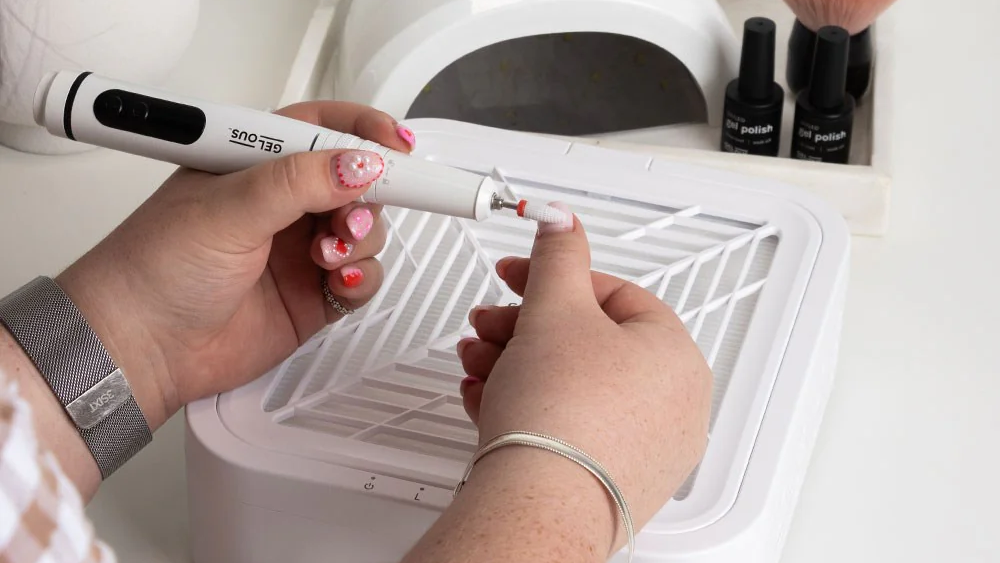
Use a Nail Dust Collector
The most effective method—captures dust at the source before it spreads.
Wear Protective Gear
- Masks: N95-rated or higher
- Eye shields: To protect against airborne particles
- Gloves: To reduce skin contact

Clean Regularly
Wipe down your station, replace filters, and wash your hands often.
Best Nail Dust Collectors for Safety
When choosing a dust collector for safety, look for:
| Feature | Why It Matters |
|---|---|
| HEPA Filtration | Captures ultra-fine harmful particles |
| High Suction Power | Removes dust quickly and efficiently |
| Low Noise Output | Maintains client comfort during use |
Recommended Models:
- MelodySusie – Known for HEPA filtration and quiet motor
- SheMax Pro – Premium suction and durable build
- Makartt – Affordable option for home use
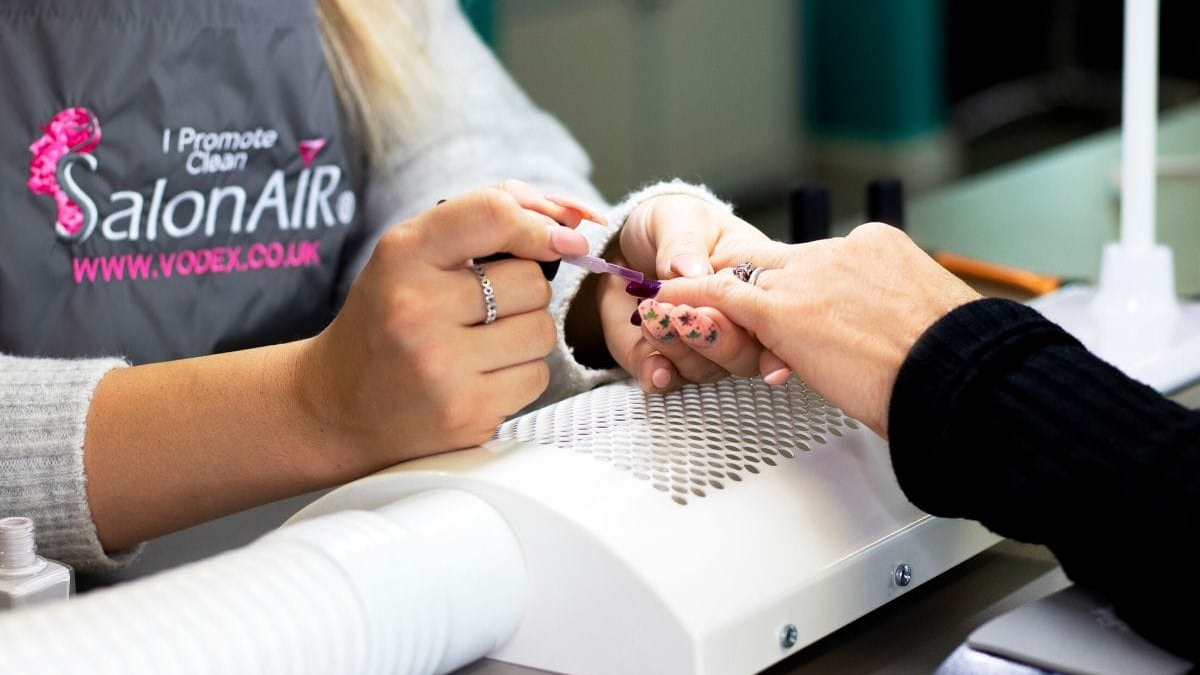
DIY Tips to Improve Air Quality at Your Station
- Open windows or install an exhaust fan
- Use air purifying plants like snake plants and spider plants
- Position your desk away from corners to allow better airflow
How to Educate Your Clients About Nail Dust
Let your clients know:
- What steps you’re taking for their safety
- Why masks and goggles may be offered
- How your dust collector improves air quality
This not only builds trust but shows your commitment to professional standards.
Nail Salons and Legal Liability
If a client develops a health issue due to nail dust and poor salon practices, you could face lawsuits or fines. Complying with OSHA and state guidelines isn’t just good practice—it’s protection.
Investing in Safe Salon Equipment
You may hesitate at the upfront cost, but quality equipment:
- Prevents illness
- Reduces downtime
- Improves client retention
Long-term, it’s more affordable than dealing with health consequences or legal issues.
FAQs About Nail Dust Safety
-
Is nail dust really harmful in small amounts?
Yes, repeated small exposures accumulate and cause long-term damage.
-
Can home users be at risk too?
Absolutely. Always use a dust collector even for DIY nails.
-
Are cloth masks enough?
No. Only N95 or similar rated masks offer proper protection.
-
Does using gel instead of acrylic reduce dust?
Slightly, but all forms of enhancement create dust when filed.
-
Do air purifiers help?
Yes, especially those with HEPA filters, but they work best with collectors.
-
How often should filters be changed?
Every 2–4 weeks or as per manufacturer guidelines.
Conclusion
Nail dust danger is real—but preventable. Whether you’re a nail tech or client, understanding the risks and implementing simple protective measures can make a world of difference.
Act today—invest in a quality nail dust collector, upgrade your safety gear, and educate your clients. Your lungs, skin, and peace of mind are worth it.

